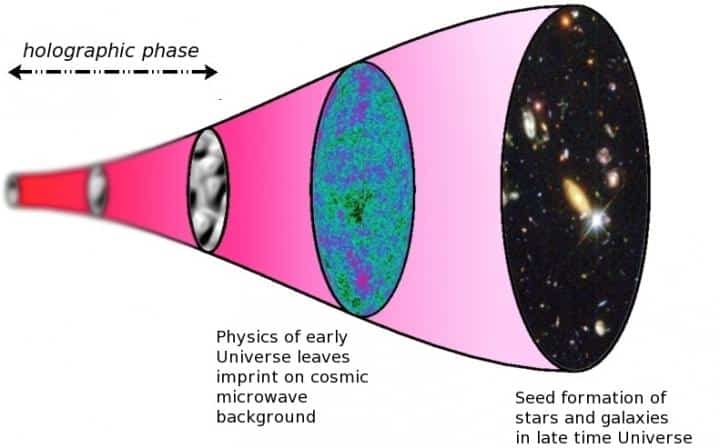Theoretical physicists and astrophysicists who have been wondering for years about the "background radiation" (the trace supposedly left by the Big Bang) seem to be moving towards an explanation that takes into account a possibility, that of a holographic universe: the universe, in other words, it could be a vast and complex hologram.
Researchers from the Universities of Southampton, Perimeter Institute and Lecce have published reports of these studies in the scientific journal Physical Review Letters.
The idea of a “holographic” universe, born in the 90s, would suggest that all the information that makes up our “three-dimensional” reality (including time) is contained in the space of a two-dimensional matrix.
The professor. Kostas Skenderis, professor of Mathematical Sciences at the University of Southampton explains: “Imagine that everything you see, hear and hear, and your perception of time, comes from a two-dimensional field. Kind of like a holographic image on a credit card.”

[note color=”grey”]A drawing that summarizes the theory of the holographic universe. Time proceeds from left to right: the first part of the drawing is blurred to emphasize that time and space did not have a clear definition. Subsequently the universe would have entered a "geometric phase", whose characteristics are well defined by Einstein's theories. Thanks to Paul McFadden[/grade]
Perhaps a more fitting example could be that of observing a 3D film: one has the impression that the images have length, width and depth, but they come from a two-dimensional image. The difference that perplexes this theory? Not a small thing: in our universe we can touch objects and they are “real” from our perspective.
In recent decades, advances in the field of space observation have allowed scientists to detect an enormous amount of data in the form of "white noise" coming from the "moment" of the Big Bang. “The possibility of a 'holographic cosmology' may be a revolution in the way we think about the creation and structure of the universe,” says Prof. Skenderis. “Einstein's general relativity explains almost everything visible, but presents several problems when the observation moves to quanta. The concept of a holographic universe could fill this gap. We hope to make further progress in this direction."
[note color=”green”]
To read the research abstract: https://journals.aps.org/prl/abstract/10.1103/PhysRevLett.118.041301
For more information about the Center for Research in Astrophysical Theories and Gravity (STAG) at the University of Southampton, visit: https://www.southampton.ac.uk/stag/index.page
[/grade]


